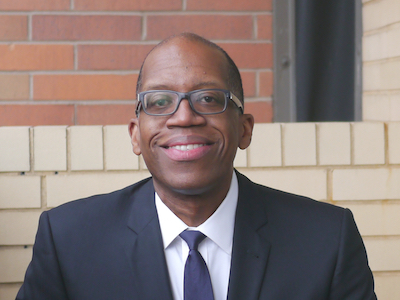Live radio captioning goes nationwide with Latino USA
“Radio for the deaf,” a captioning technology developed and refined through an NPR Labs partnership, is moving into mainstream broadcasting with Latino USA, which recently became the first nationally syndicated public radio series to offer live captioning for the deaf and hard of hearing.
The Futuro Media Group’s Latino USA introduced Captioning for Radio on its Feb. 23 broadcast. The technology, developed through an NPR Labs partnership with the International Center for Accessible Radio Technology (ICART) at Maryland’s Towson University, provides nearly real-time text transcripts to deaf and hard of hearing audiences. ICART began piloting the technology during the 2008 presidential elections.
The decision to add captioning service to the show was easy, said Maria Hinojosa, Futuro president and Latino USA e.v.p. and anchor. Benefits of offering captions include exposing the show to an underserved audience, one that has responded positively so far to the addition. Captioned news for the deaf and hard of hearing is especially important to Latino USA’s primary target audience, she said, because Hispanic communities have a statistically higher incidence of childhood deafness than the general population.
“When the idea came up, it just made so much sense for us. We’ve always been about giving a voice to the voiceless and a face to the faceless,” Hinojosa said.
Although the concept of radio for deaf audiences seems counterintuitive on the surface, the idea sprang from the enhanced capabilities of digital radio, said NPR Labs President Mike Starling. Specifically: the ability to insert text into digital transmissions and display it on receivers. Starling saw radio captions as a logical step to extend service to the deaf and hard of hearing by providing captions of live broadcasts and textual alerts of emergencies and natural disasters such as floods, fires and tornados.
Captioning technology is also being adapted for those with visual impairments with a Braille translating machine that provides a tactile record of the text.
Work to develop radio captioning began in 2007, and the consortium eventually modeled its system on one adopted by the BBC. Refinements for captioning of the 2012 presidential debates demonstrated that the technology could work in real time.
“Everything really started kicking in after that, and we knew it was time to move forward,” Starling said. “Futuro expressed interest, and we thought it was a great fit and would be a way to get this great program to that community.”
Captioning for radio differs from traditional closed captioning on television because there’s no need to sync text with visual cues appearing on screen. Trained stenographers can handle closed captioning of live video, but this approach was too expensive to be financially viable for wide adoption by radio broadcasters.
To resolve that issue, ICART implemented a two-step process for captioning of live radio programming. It relies on voice recognition software and a backup editor who checks the text for accuracy.
In the first stage of producing radio captions, a “voice writer” working in a booth studio repeats a live feed of the broadcast using techniques that optimize the accuracy of the voice recognition software. ICART recruited graduate students from Towson University as voice writers and had to screen for those who demonstrated an aptitude for accurately relaying what they heard in live broadcast feeds for 10–15 minute periods.
Fewer than 10 percent of the applicants who applied for the jobs could handle the work, Starling said. “It’s a surprisingly small number of people who have this ability.”
The voice writer just speaks to convey information from the broadcast and makes no changes to the text turned out by the software. That is handled by an editor who checks the copy for accuracy.
The process creates about a 20-second delay from the live feed, Starling said. Since radio captioners are freed from syncing the text to the visual cues of closed-captioned TV, they can provide a more accurate transcription.
Starling anticipates that other public radio shows will adopt radio captioning now that the technology has been shown to work. In addition to helping pubcasters reach an underserved audience, radio captions could also open up a new revenue stream. Like closed captioning that carries a “sponsored by” tag, pubcasters could seek similar sponsorship sales for radio.
The technology will also be tested for emergency preparedness purposes in a Gulf Coast region pilot project, which started in January under a contract with the U.S. Department of Homeland Security and the Federal Emergency Management Agency (Current, March 11). The project also incorporates the Braille-radio technology and will provide emergency warnings of wildfires, floods and tornadoes to deaf, hard of hearing and deaf-blind audiences.






